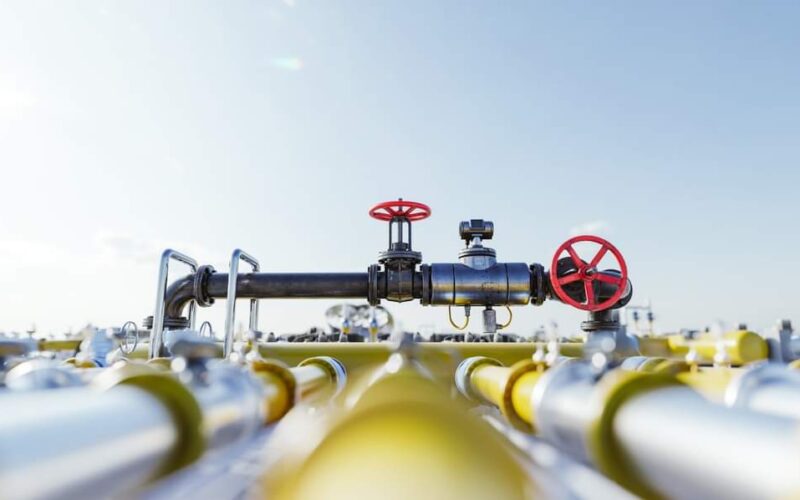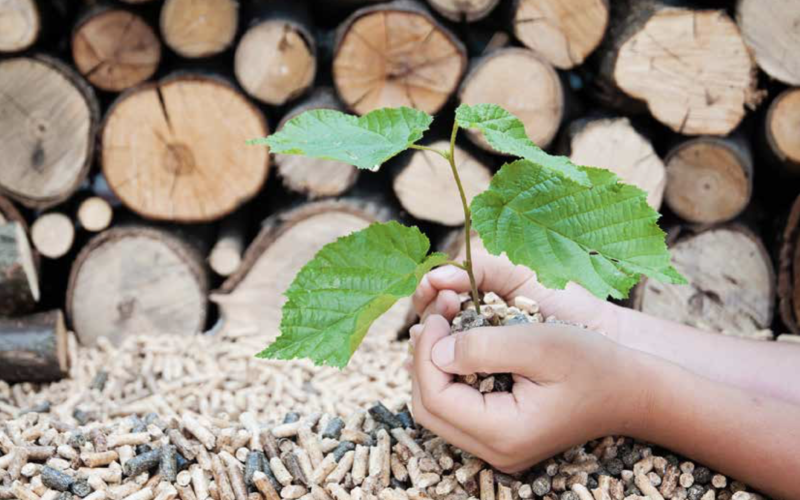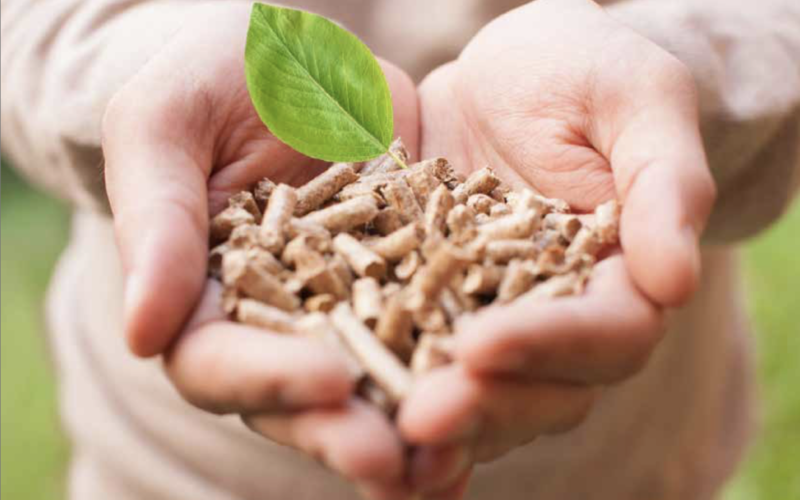Bioenergy transition in Ukraine
General information
In Ukraine, the development of bioenergy is regulated by the following documents:


Current use of biomass in Ukraine
According to the Energy Balance of Ukraine, the share of biofuels in the total primary energy supply (TPES) in 2018 amounted to 3.2 million toe, which is 3.4% of TPES.
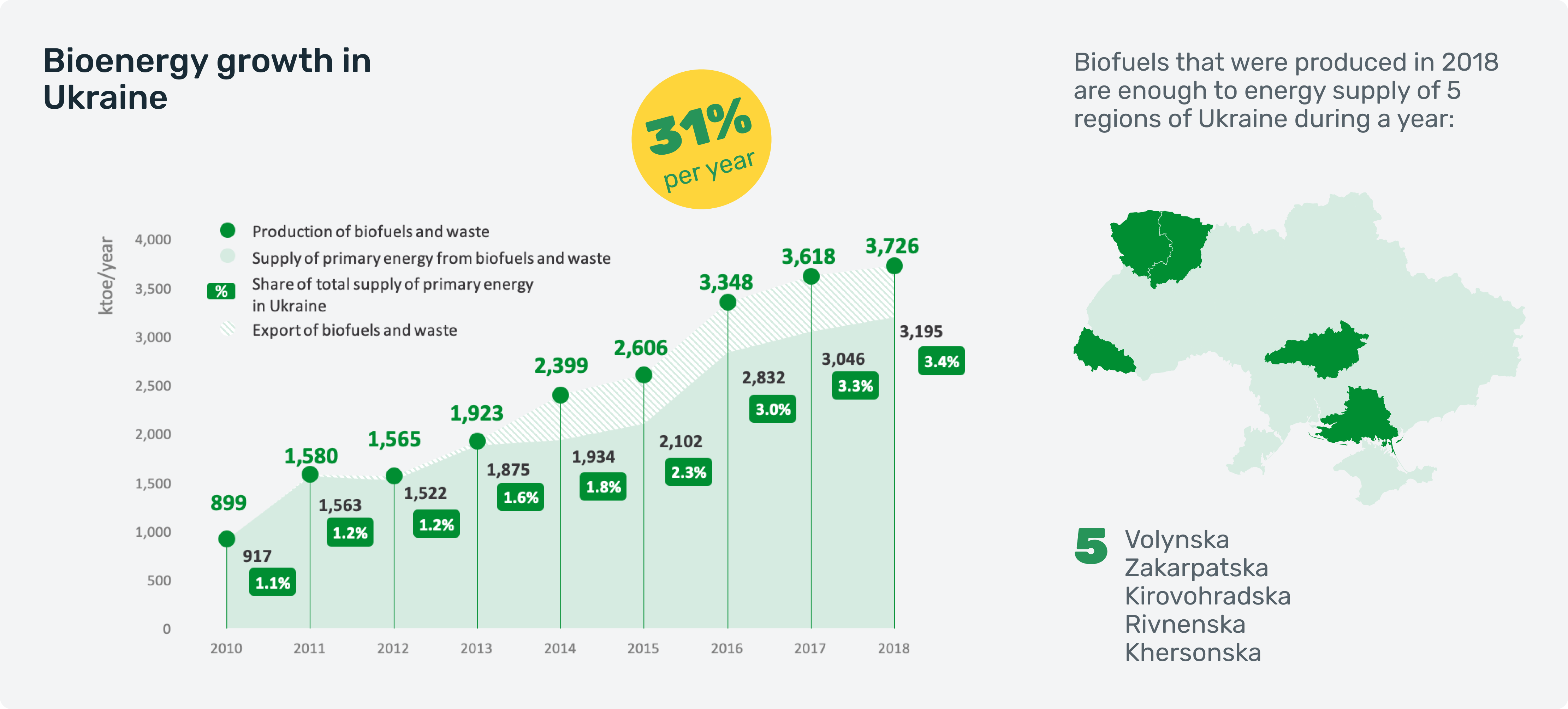
Bioenergy potential
According to the Bioenergy Association of Ukraine, as of 2018, the energy potential from biomass is 23 million tons of oil equivalent.
The main components of this potential are plant residues (10 million toe or 44% of the total biomass potential) and energy crops (7.5 million toe or 32% of the total biomass potential).
Plant residues include straw of grain crops and rapeseed, corn stalks, sunflower husk, etc. Energy crops include willow, poplar and miscanthus (for solid biofuel production) and corn for biogas production.
Energy Potential of Biomass in Ukraine is enough to replace all gas, coal and gasoline imports (2018)
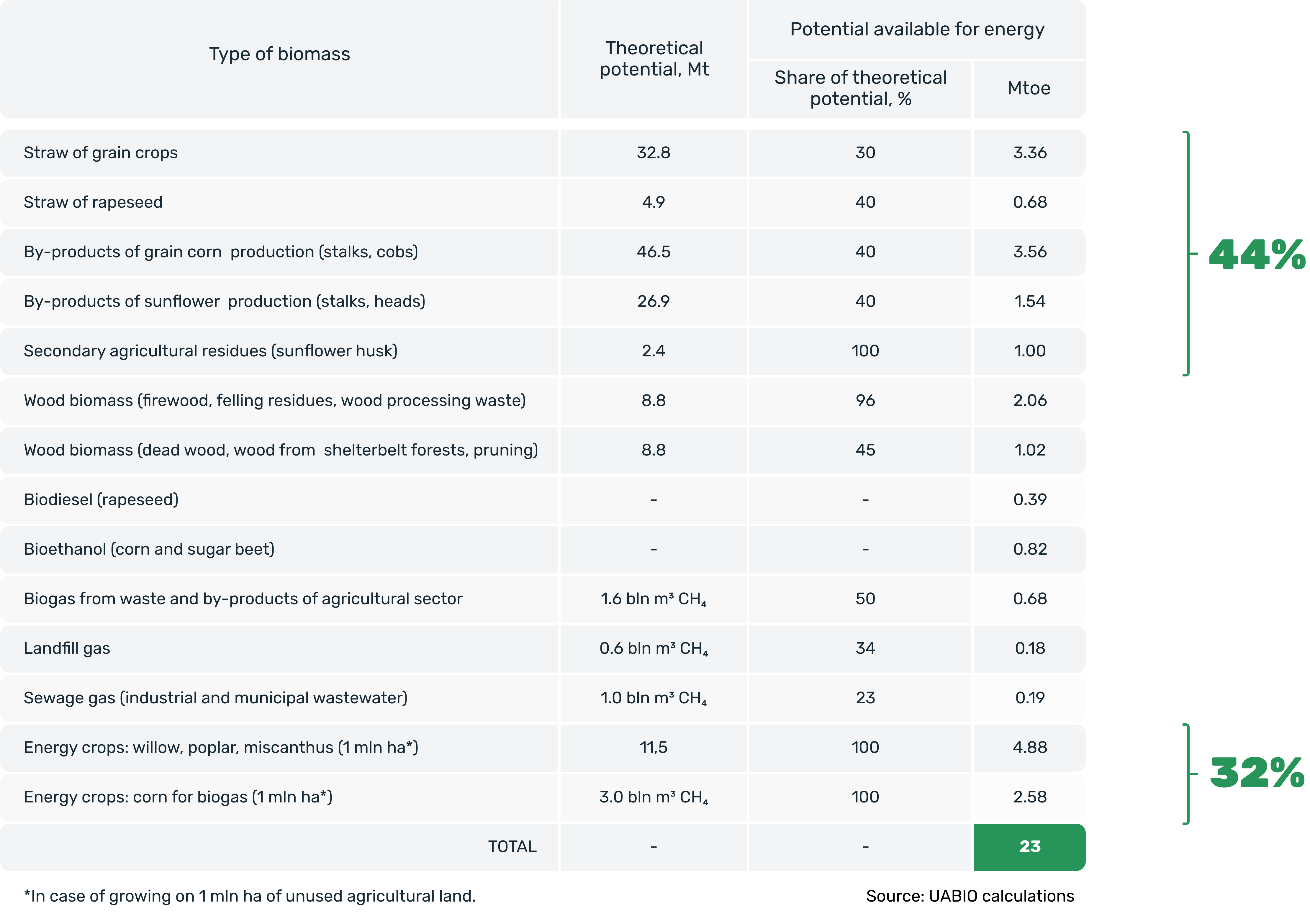
Bioenergy is an integral part of Ukraine’s “green” energy transition
UABIO Position
Reasons to develop bioenergy in Ukraine
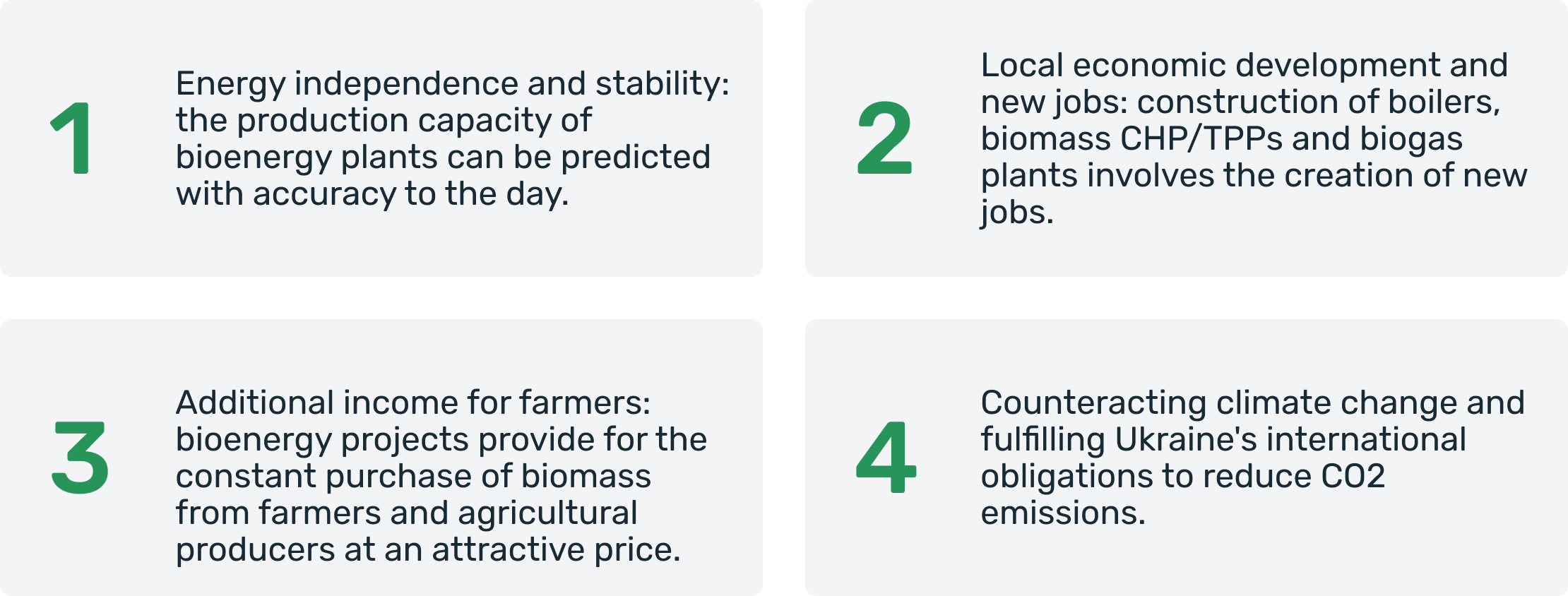
Barriers that stops the bioenergy development in Ukraine and ways to overcome them
- Underdeveloped fuel market in Ukraine. The creation of a biofuel market and the development of regulations that will regulate its activities is a necessity.
- Monopoly position in the heat supply market. It is necessary to introduce a competitive market of thermal energy on the model of a single buyer and start work on bylaws that will guarantee the implementation of the law.
- Complicated access to heating networks. UABIO proposes to update the regulatory framework, to provide an exclusive list of grounds for denial of connection, as well as to provide for the need to provide DHW with a complete description of the system to assess the potential manufacturer’s ability to connect.
- In general, there is a problem of insufficient biomass in the market, which leads to higher prices. The problem can be solved by creating a biofuel trading system, a single electronic platform for biofuel trading. State-owned enterprises will be obliged to sell part of the raw materials through this system, and those who use the “green” tariff and the stimulating heat tariff will be obliged to buy biomass through this platform. This is a guarantee of quality, good price and the presence of interested players in the market.
- Low investment attractiveness of bioenergy projects. The validity of the “green” tariff is not enough for the payback of bioenergy projects. UABIO proposes to extend the “green” tariff and make it higher for low-capacity installations.
- Lack of incentives for growing energy crops. Farmers do not want to invest in growing energy crops due to low profitability. UABIO proposes to lease land for such projects without auctions, extend the lease term by at least 20 years and provide for a one-time subsidy of UAH 25,000 per hectare. The state will bear the costs and help set up the plantations, but in the next 20 years they will produce local fuel, create jobs, and improve local development through taxes.
- Difficult access to logging residues. It is important to ensure that such remains are transported to nearby roads and that their burning in the forest is prohibited.
- Increasing biomethane production in Ukraine. This is a significant resource. In the future, this gas can be fed into the pipeline and used for heat, electricity and transport. In Ukraine, it is possible to obtain biomethane not only from traditional silage and manure. Modern technologies allow the use of agricultural residues, straw, etc. UABIO proposes to create a register where each produced cube of biomethane will be recorded and each consumed cube will be written off.
UABIO forecast for the bioenergy development in Ukraine in 2020-2050
The total consumption of biofuels in 2050 may be 23 Mtoe/year.
About 50% of these biofuels will be used for thermal energy production and will directly replace natural gas (equivalent to replacing 13.7 billion m3/ year of natural gas). The rest will replace electricity from coal and nuclear energy, as well as petroleum products in transport.
In the period 2020-2050 in Ukraine, the use of wood biomass will remain at the same level, but the use of straw, stalks, sunflower husk, agricultural residues, energy crops, liquid biofuels, solid waste for energy production will increase. This forecast is based on calculations that show that the potential of wood biomass and sunflower husks in Ukraine in 2020 has already been used by more than 90%.
The structure of biofuels use in Ukraine till 2050 (UABIO estimations)
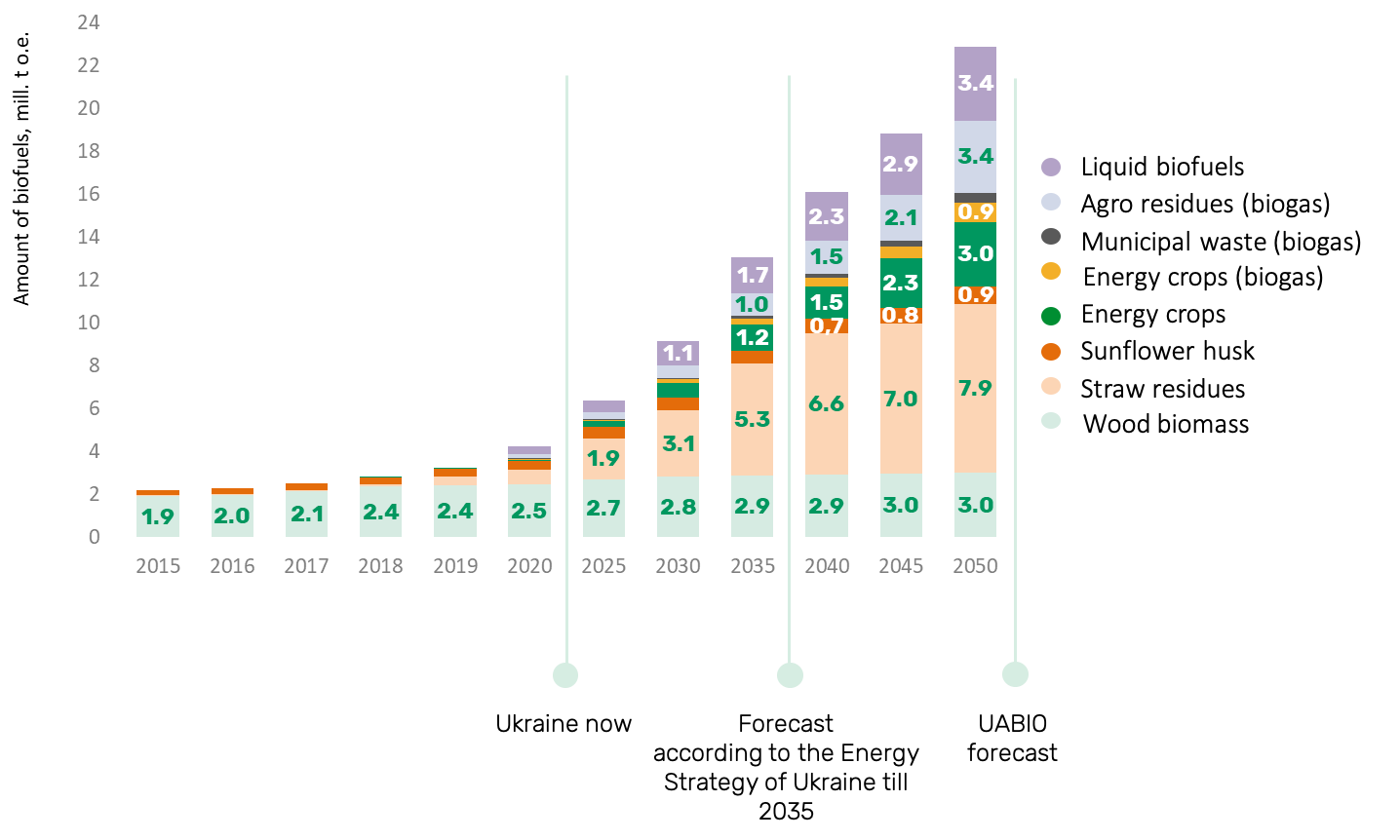
UABIO results
Roadmap for the bioenergy development till 2050 from UABIO experts
UABIO proposals to the Concept of “green” energy transition of Ukraine till 2050, created by Ukrainian Ministry of Energy in 2020
UABIO proposals to the Concept of state policy in the field of energy and environmental protection, created by Ukrainian Ministry of Energy in 2019
